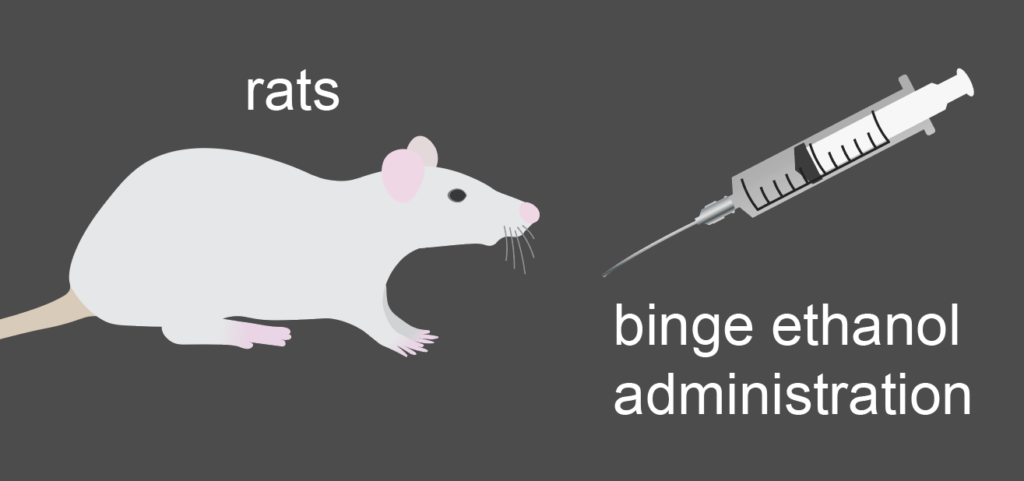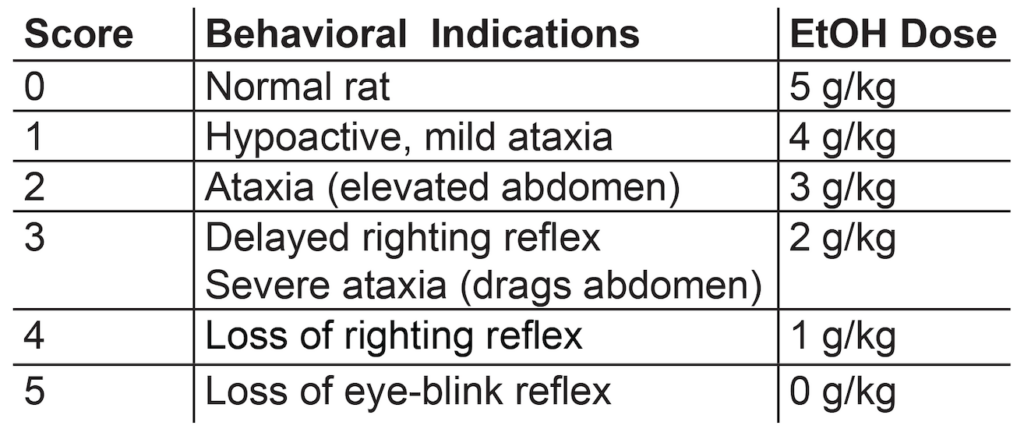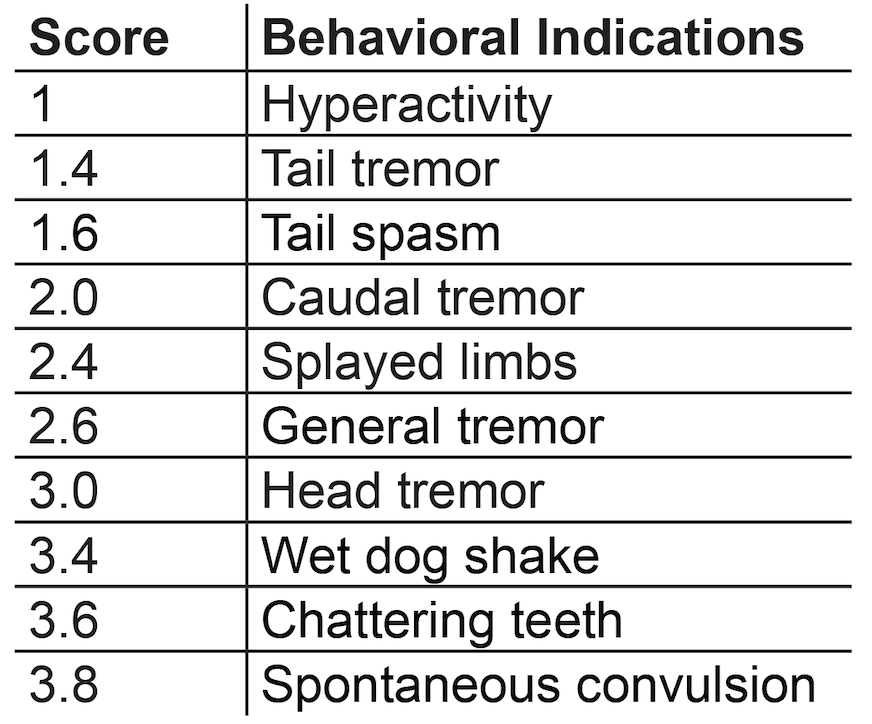The Majchrowitz Binge Alcohol Protocol (Majchrowicz, 1975) is a validated and commonly used method to mimic the binge-like intoxication, dependence, withdrawal, and damage observed in persons with an Alcohol Use Disorder.

Each day, ethanol is administered to rats every 8 hours via gavage. Rats are administered an ethanol diet (25% ethanol w/v in Vanilla Ensure Plus®, Abbott Labs, Columbus, OH, United States) or an isocaloric control diet (Vanilla Ensure Plus® containing dextrose). The amount of diet each control rat relieves is calculated as the average volume of diet received by the ethanol-treated rats at each time-point. Most frequently, ethanol administration lasts for four days, although a duration of 2 days is sometimes used in the Nixon lab.

Blood ethanol concentrations (BEC) are determined via tail blood, typically 90 minutes following the 7th dose. BECs are analyzed via an AM1 Alcohol Analyzer (Analox Instruments, Lunenburg, MA, United States).
Withdrawal behaviors are measured every 30 minutes, beginning 10 hours after the final dose for 17 hours. Behavior are scored based on a withdrawal severity scale.

Majchrowicz E. Induction of physical dependence upon ethanol and the associated behavioral changes in rats. Psychopharmacologia. 1975 Sep 17;43(3):245-54. doi: 10.1007/BF00429258. PMID: 1237914.
Morris SA, Eaves DW, Smith AR, Nixon K. Alcohol inhibition of neurogenesis: a mechanism of hippocampal neurodegeneration in an adolescent alcohol abuse model. Hippocampus. 2010 May;20(5):596-607. doi: 10.1002/hipo.20665. PMID: 19554644; PMCID: PMC2861155.


